#青龍山
Explore tagged Tumblr posts
Text



31 notes
·
View notes
Text
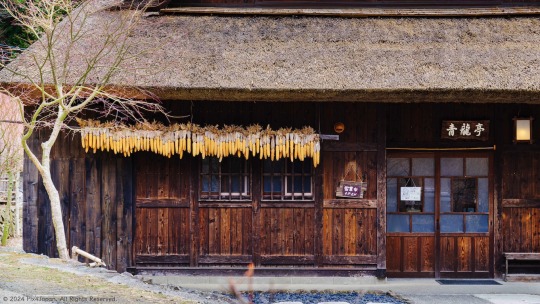
Nenba Village: Where Tragedy Led to Cultural Renewal
Location: Fujikawaguchiko, Yamanashi Pref., Japan Timestamp: 11:29・2024/03/20
Pentax K-1 II + DFA 28-105mm F3.5-5.6 + CP 63 mm ISO 100 for 1/20 sec. at ƒ/8
Nenba Village, also known as "Saiko Iyashi-no-Sato Nenba," stands as a testament to resilience, nestled in district of Minamitsuru on the western shores of Saiko Lake in Yamanashi Prefecture.
Originally known as Ashiwada Village, it flourished as a center for the silkworm industry, with the distinctive feature of glass windows on the second floors of its thatched-roof homes, where silkworms were raised for their silk until 1966 when a devastating mudslide engulfed the entire village in a sea of mud.
Today, visitors can wander through approximately 20 meticulously reconstructed thatched-roof houses, each serving a unique purpose as souvenir shops, restaurants, sweet shops, craft exhibits, and museums.
One such house within the village is the traditional Seiryutei Tea House (see photo). Seiryutei Tea House, once a humble abode from the Edo Period (1603-1867), it now invites visitors to savor the essence of traditional Japanese delicacies including Japanese matcha sweets, homemade soy milk pudding, and sweet rice dumplings (dango).
For a deeper delve into the village’s history, including Google Maps links, source materials, and additional references, see the full write-up, which offers a concise 2-minute read (https://www.pix4japan.com/blog/20240320-teahouse).
#風景写真#山梨県#西湖いやしの里根場#茶処青龍亭#pix4japan#pentax_dfa28105#pentaxk1mkii#landscape photography#Japan#Yamanashi Prefecture#Saiko Iyashi-no-Sato Nenba#tea house#Seiryutei
14 notes
·
View notes
Text
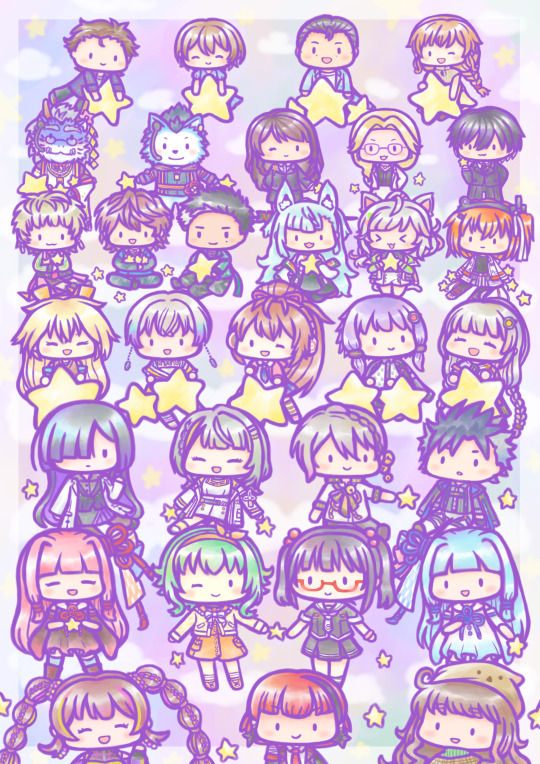
A.I.VOICE SPECIAL BOOK 2024 の、A.I.VOICE ILLUSTRATION FESTIVAL GALLERY【イラストギャラリー】にイラストを掲載していただけました! https://www.kadokawa.co.jp/product/322309000029/ https://www.ai-j.jp/topics/10433/
#A.I.VOICE#AIVOICE#足立レイ#青山龍星#伊織弓鶴#羽ノ華#紲星あかり#GUMI#栗田まろん#琴葉茜#琴葉葵#高遠咲#式狼縁#式大元#ZOLA Project#タンゲコトエ#紡乃世詞音#VY Project#アナウンス部#紅桜ショウガ#結月ゆかり#ユニティちゃん#夜語トバリ#来果#RIA#若穂みのり#風見壮一#潮崎かずき#日ノ出賢#結城香
12 notes
·
View notes
Photo

(宇賀那健一監督最新作、映画『渇いた鉢』メインビジュアル解禁 – Tokyo Nowから)
0 notes
Text
【ヤクルト】交流戦白星締め 高津臣吾監督「非常に大きなゲームだった」

【ヤクルト】交流戦白星締め 高津臣吾監督「非常に大きなゲームだった」 - 記事詳細|Infoseekニュース
◆日本生命セ・パ交流戦オリックス4―5ヤクルト(16日・京セラドーム)ヤクルトは9回2点差をはねのける逆転勝ちで交流戦を9勝7敗2分けの6位で終えた。高津臣吾監督は「非常に大きいと思います。(勝率)5割で終わるのか、2つ貯金して終わるのかでは随分違うと思いますし、最初からすっきり勝つのもいいですけど…
【全文を読む】
Xユーザーの🚍Macreeeeeen マクレーン🚍さん: 「#ヤクルト #Swallows #熱燕 #すわほー 丸山和郁 のレーザービーム ナイスプレイ⚾️ https://t.co/hJ9Jt0MK8P」 / X
0 notes
Text




https://kichijo-ji.jp/index.html#top
ここは和ってかんじで癒やされた 緑いっぱい🌱🪴🌿🌳
風がよく通って静かなお寺〜
0 notes
Text
第一話 「青高、春の嵐!顔真っ青な青春の始まり!?」
「ここが、龍脈の一番集まった町か……」
低い声が稲妻のように轟く。その声は、大柄の一人の男のものだ。じゃり、と巨体を支える頼もしき足が地面を擦り、音を立てる。
彼の名前は「青山龍星(あおやま りゅうせい)」。左手の黒いレザーの手袋に落ちる淡い光沢が、ギリリと握りしめられ、細く伸びる。その握力に耐えうる頑丈さを感じさせる。
その男は、今日この日のために、獣さえ足を入れることを憚るような、仙人が住むような滝壺や、龍が住むとさえ言われる秘境(十和田)でその技と肉体を限界まで鍛え抜き、磨き上げられた道具。
龍が如き四肢を持つ、誰もがその覇気により認めざるを得ない「最強」の男である。
その男がやってきたのはーー……、
がさり、と茂みを折る。その薮は普通の男では動かす事が困難な物だが。
山の下に広がるのは、盆地。田舎のはずだが人口も多く不可思議に賑わった、田舎の町だった。ここが彼の新しい「巣」だ。
「ついに高校生だ〜!桜めっちゃ綺麗〜、友達たくさん作るぞ〜!」
快活な声を少年はあげる。少年の名は「式狼縁(しき ろうえん)」。若々しく生え揃った豊かな黒髪に、春の風がはためき、桜の匂いを運ぶのが見える。
「友達はまろがおるじゃろ!たくさんもいるのか?」
不思議な昔の公家のような口調の少女は、「丹下琴絵(たんげ ことえ)」、狼縁の幼馴染の白銀色の長髪の少女である。美容院に行ったばかりのようで、キューティクルが整った輝きと、切り揃えられた真っ直ぐな前髪が愛くるしい。
「そりゃそうでしょ。あっ学校見えてきた」
先ほどの桜は、高校の隣に位置する中学校のものであるので、そこを通り過ぎた地点に彼らのこれから青春を紡ぐであろう学舎があるのだ。
「…‥何遍見てもおどろおどろしいな!最悪だよ本当!」
青藍蒼高校は、中学校と高校の背後を取る巨大な山のせいで日陰になる方に陣取っていた。
「やだ……まろ、怖い……ロウ、まろ、学校行けにゃいよぉ……」
「コトエちゃん、大丈夫だ!俺がついてるから、ネ!?ほら、ダッシュだ!どっちが先に着くかな」
少年少女は走り出す。その青春が、暗い闇に包まれてるとも知らずに。
青藍蒼高校を象徴するような、日の見えない青い空に影が差した。新学期にも関わらず、灰色の雲が出て春の風は嵐になる。雷鳴が轟く。まるで何かを告げているかのように。
「うわっ、風つっよ。ん……?」
少年は風の強さに驚きながら上をふと見ると、山の上に人影を見た。少年の視力は2.0である。
「人……?」
立ち止まる少年に、少女は気にもとめず走り続け、ゴールを目指した。彼だけが人影に気付いているが、きっと大事なことではないだろう。
「いや待てよ!」
少年は少女を追いかけてるうちに人影のことなど忘れていた。
入学式が、始まろうとしていた。
「ねぇ……まろ、まじ気まずいんじゃけど。みんなめっちゃ親おるわ……まろ無理かもしれん」
少女は「新入生歓迎」の看板を前に、新高校生とは思えぬ落ち込んだ表情だ。
「大丈夫だよ、先生に連絡したら俺らだけでいいって言ってた。コトエちゃんの保護者って基本俺じゃんいつも。だからいつもとあんまかわんなくしてればいいんじゃないかな〜なんて〜。入学おめでとう、コトエちゃん」
少年は慣れたもので、いつものことのように軽く少女を励ます。彼らには両親がいないようだ。兄妹のような仲の良さはそれでなのだろう、人は幼少の愛着対象に安心を見出す。
「それもそうじゃな!でもまろ、まじ家でプリンセス対応で育ったからな〜」
「そうだね、その口調も俺がまじコトエちゃん姫対応じゃんうちで、って言ったらコトエちゃんがどこからか昔のお姫様の口調調べてきて真似始めてそれになったんよね」
少女というものは得てして、周囲から影響を受けやすいもので、彼女も例外ではないようである。
「まろ、でもロウみたいな付き人役いなかったら恥ずかしくて辞めてたよ?」
少年は遠い目をする。
「あ〜そういえば、俺が付き人役だったっけ……お姫様(ひいさま)とか、お爺ちゃんに教えられながら頑張って付き合ったわ」
「えっまろ、さすがにロウとは付き合ってないよ」
「付き合ってないよ、それはわかってるよ」
姦しく言論するその様子は、さっきまで落ち込んでいたとは思えないぐらい子供らしく朗らかだ。周囲の子供達は、両親と共にこの後の予定について話し込んでいる。皆、新しい環境に浮き足立っていて落ち着くのに精一杯のようである。
少年少女達はお互い見知っていて、中学校からの仲良しと巡り会うたびに黄色い声が上がる。
ここで大雨にさえなっていなければ、普通の暖かい入学式風景だ。青藍蒼高校の上空のみを、厚い雲が覆いシャワーのような雨を降らしていた。車の運転ができる保護者の同伴がないコトエとロウは、上がることを祈るしかないし、それを考えないようにするかのようにずっと雑談をして体育館の中で着席して式の始まりを待つしかない。
気が気でない中、校長の話が始まり、吹奏楽部の演奏も終わった。雨は止まない。
ロウは、コトエがこのままでは折角美容院に行ってうるつやさらさらにした髪が台無しになってしまい一生引きずる嫌な思い出になることを恐れ、軽く貧乏ゆすりを始めた、その時。
その男は現れた。
「続けて、担任の先生は新任の青山龍星先生です。青山先生、大丈夫ですか?」
ゆらり、と巨体が立ち上がる。生徒の中から息を呑む音が上がる。外は晴れ始め、雨が止み、割れた雲から光が入る。
体育館の窓を通しその男が前に出るタイミングで都合よくスポットライトのように白く館内が照らし出される。
「君たちの担任を務めることになった、青山龍星です。君たちには何があっても俺が守ってみせる」
そう低音でマイク無しで宣言する教師のシャツは、びしょびしょに濡れていた。鍛え上げられた胸筋に張り付く、頼りなく薄い白シャツ。外の大雨に降られ、着替えもなかったのだろう。
しかしそれを気にも留めず背後に腕を回し、男は堂々と胸を張っていた。
先生や親の女性陣から生唾を飲むような音を聞きながら、ロウは思った。
「やっべえ……この学校……」
0 notes
Text
《龍種・應龍》
龍種裡唯有背生羽翼的蒼龍、應龍才是象徵皇權的真龍。蒼龍即是四象中的青龍,四象分別是青龍、白虎、朱雀、玄武,也就是天之四靈。青龍代表東方。 傳說中應龍生出鳳凰以及麒麟。鳳凰是萬禽之首,麒麟是走獸之長。而應龍則是祖龍,地位高超。
-山海經生物系列之應龍 說到龍每個人心中初初浮現的形象大概都不一樣。民間故事裡騰雲駕霧的金龍,可以呼風喚雨翻江倒海的海龍,被哪吒抽筋拔骨可憐的東海龍王之子或是寺廟龍柱上守衛著神明的石龍,亦或是古董瓷器上彩繪的五爪、三爪龍等等,又或許是曾經入你夢的龍。 我的幾部奇幻探險小說裡主角們也遭遇過幾次如龍般巨大的生物,不管是在馬卡魯峰冰凍地底守衛聖物的蛟,西夏帝王陵迷霧森林裡遇到的巨蟒群或是已經修煉成龍形具有女媧血統的蛇妖都不能算是真正的龍。 那麼怎麼樣才算是『真龍』呢? 根據南北朝時期志怪小說《述異記》的說法:虺五百年化為蛟,蛟千年化為龍,龍五百年為角龍,又千年為應龍。 虺,根據宋朝刑昺對《爾雅》的義疏:蝮,一名虺。江、淮以南曰蝮,江、淮以北曰虺。 《爾雅・釋魚》的原文是:蝮虺,博三寸,首大如擘。 爾雅的成書時期說法不一,如果採周公時期著書那麼西周時的寸大約是相當於1.58公分,楚…
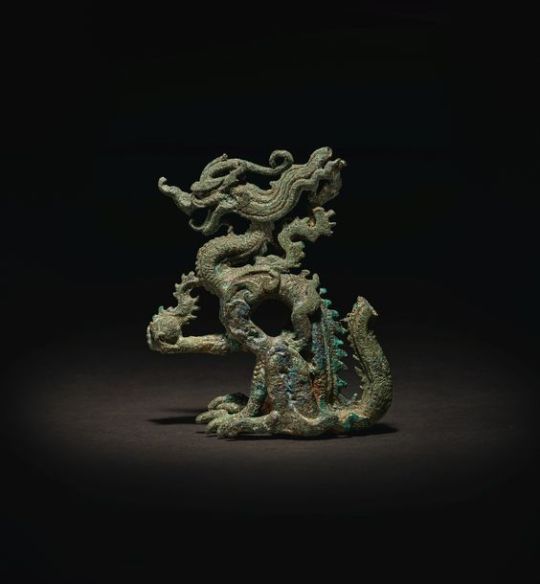
View On WordPress
1 note
·
View note
Text
台北青旅【寓見青旅】龍山寺捷運站步行五分鐘.上下床鋪女生四人房.寬敞交誼廳飛鏢機沙發躺椅/洗烘衣機│華西街觀光夜市│廣州街觀光夜市
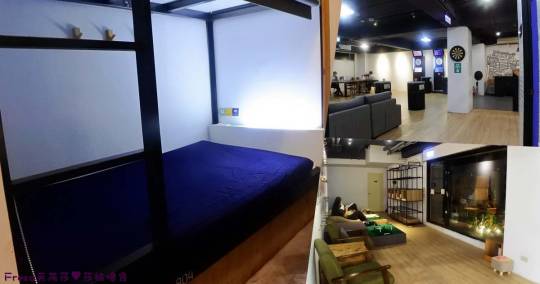
台北龍山寺捷運站青年旅館,寓見青旅. 平價省錢,以床位計價,最少四人房型. 入住女生四人客房,空間還算寬敞,很乾淨. 寬敞舒適的交誼空間,有飛鏢機、沙發躺椅. 還有微波爐、烤箱、大冰箱、投幣洗烘衣機. 住宿設備齊全,有陽台曬衣,住多天也可以!
台北青旅「寓見青旅」龍山寺捷運站步行五分鐘.上下床鋪女生四人房.寬敞交誼廳飛鏢機沙發躺椅/洗烘衣機

寓見青旅│青旅外觀
寓見青旅,近龍山寺捷運站,步行五分鐘. 周邊也有公車站,昆明街口公車站! 青旅外觀就是一棟大樓,門口木門很好認.
距離之前分享過的億家具萬華店也很近. 超夯的剝皮寮老街、臺北市鄉土教育中心~ 要步行2分鐘即可到達.

外牆高��著寓見青旅招牌. 夜晚周邊比較昏暗安靜! 但是我們入住三天二夜. 夜晚走過來也相當安全.

寓見青旅│青旅大廳
走入室內,空間不大. 現場人員早上10點到晚上8點. 若要入住需要注意入住時間哦! 進門右邊是接待櫃檯. 以床位計價,上下鋪房型. 擺放桌椅,整理行李還挺方便.

換個角度看看大廳,那扇門是通往交誼廳. 以及男女分開的淋浴間. 與住宿客房區是分開的.

若有忘記帶的毛巾、大浴巾、刷牙組等備品. 都能現場付費購買.

寓見青旅│樓層廊道
住宿樓層分為二區,我們住在櫃檯這層! 從櫃檯旁邊的房門,可用房卡感應入內. 走進來,請記得降低音量,二側都是客房. 廊道底端,有大洗手台可以刷牙洗臉. 以及男女共用的衛浴廁所~ 淋浴間則是位在地下樓層. 就是前面提到,櫃檯對面那扇門入內. 一樣都要使用房卡感應哦!記得隨身攜帶!
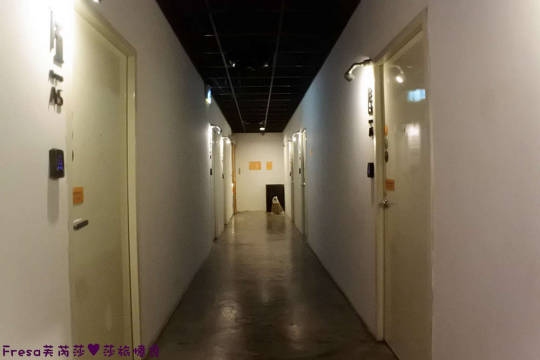
女生四人房
這次入住二晚,就選女生四人房! 與旅伴一起入住,住在下層很方便. 房卡感應才能開門,可以看到空間滿大. 可以攤平24吋行李箱,旁邊也能置放.

左邊牆面有燈光開關和開門按鈕. 此外,每個床位都有專屬密碼櫃. 需要房卡感應,才能開行李櫃哦.

行李櫃裡面放有枕頭、棉被. 我把24吋行李箱放入剛好. 還有二個衣架、衣桿.
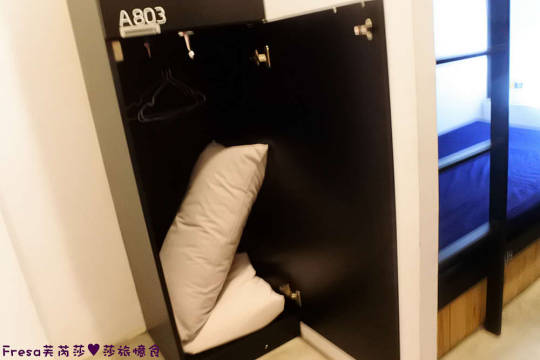
往內,就是二組上下舖,可睡四人. 當天遇到一位旅人,很親切地變成朋友呢! 我覺得房內空間不算太擁擠. 第二晚,就只入住我和旅伴,整個包下超開心!

來看看床鋪有哪些設備.
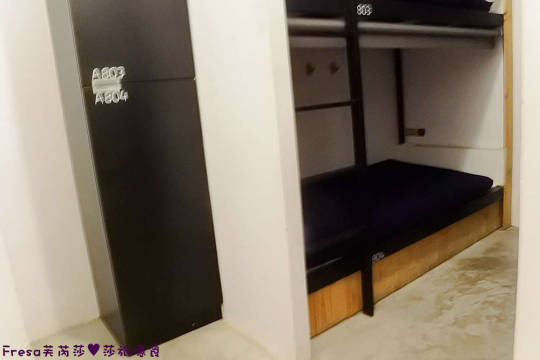
床頭有小燈可以打開,二個掛勾可以掛衣. 以及WIFI、一個插座.
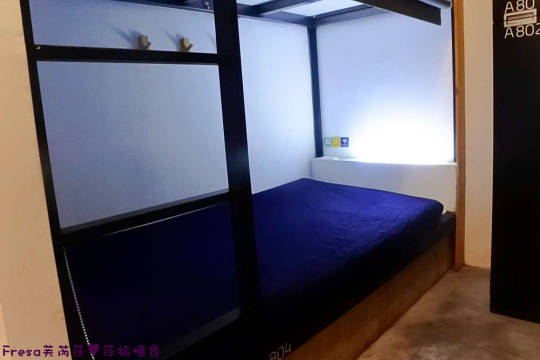
每床只有一個插座,是比較不貼心! 要記得帶三角插頭~不然不夠用呀.

對於房內規則,都有貼在牆面,記得遵守.
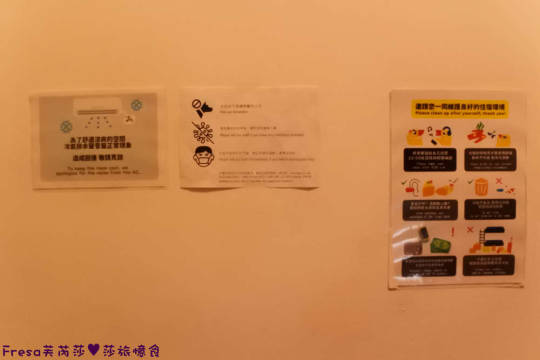
外頭廊道走到底就是廁所和洗手台. 以及對外的陽台區域,可以曬衣哦.
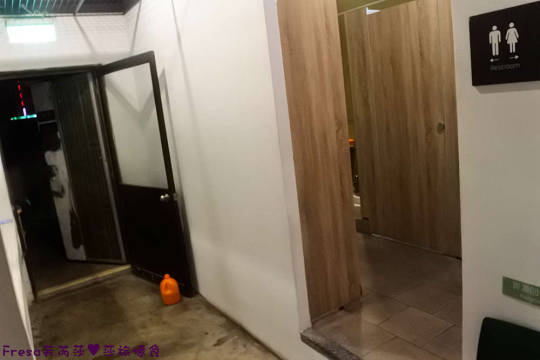
寓見青旅│廁所間
這裡的一樓廁所是男女共用. 住了這幾天,是沒有覺得不便.
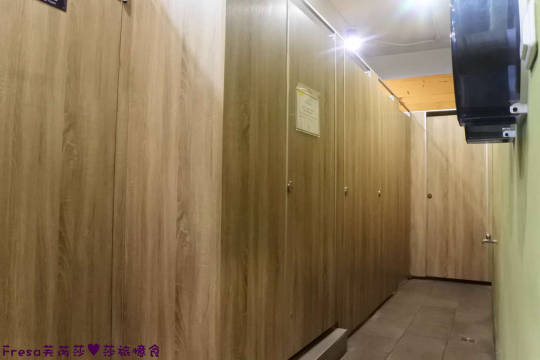

外面有多個洗手檯位! 簡單洗臉刷牙都好用. 只是需要吹風機,就要到地下樓層哦.

接下來,從櫃檯對面那扇木門前往地下樓層. 記得要攜帶房卡感應開門哦!

走下樓梯,往左走去. 是男女分開的淋浴間. 以及一間廁所間、投幣式洗烘衣機.

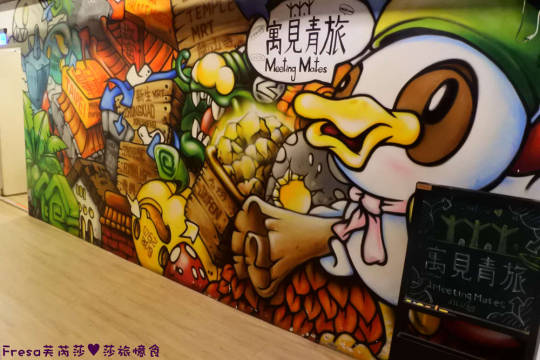
寓見青旅│女生淋浴間
走進來有三個座位,可以吹頭髮.

這裡的洗手檯面也很寬敞! 我早上還是習慣來這洗臉刷牙. 因為還要使用吹風機呀~
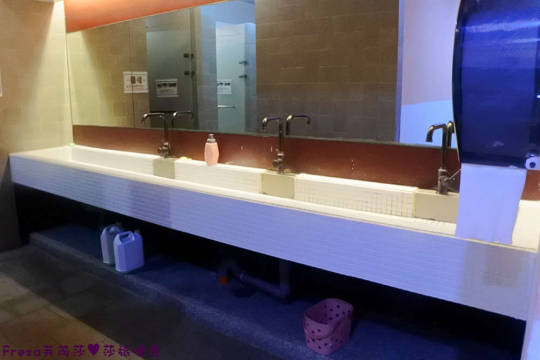
裡面有多間淋浴間,是沒有排隊!

淋浴間空間不會侷促~
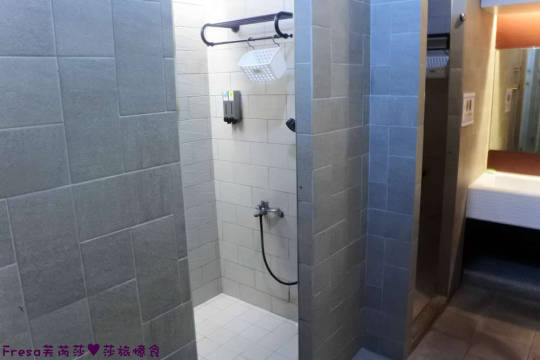
淋浴間內上面可放衣服、提籃. 洗沐產品都是掛在牆面的.
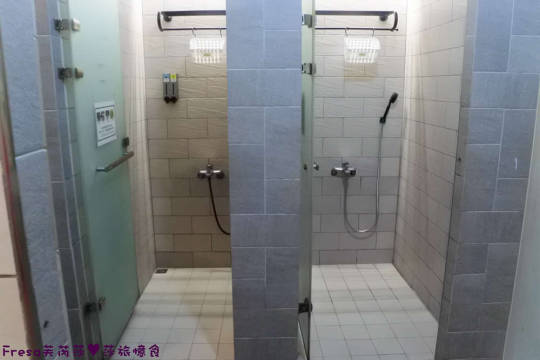
熱水還滿強的,不用等熱水很久. 熱水溫度很高,沖洗的好舒服! 整個疲累感都瞬間消除了.

寓見青旅│廚房設備
地下樓層往右走去. 則是廚房設備及休閒交誼廳. 這間有擺放冰溫熱飲水機、大冰箱、 烤箱、微波爐~房客都能自由使用.

青旅沒有提供早餐,可以自備吐司和果醬!

寓見青旅│投幣式洗衣間
各一台洗衣機、烘衣機,都是投幣式! 入住多天的旅人,真的方便. 還有一樓曬衣區域,吹風曬乾,衣服不悶臭.

寓見青旅│休閒交誼廳
一進入到休閒交誼廳,也太寬闊了吧! 整個空間設計得很優閒!
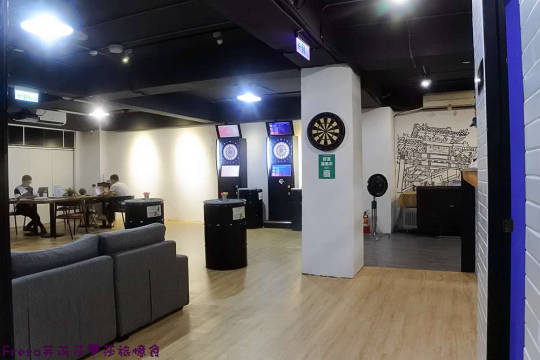
擺放大型沙發,長型大桌,休閒辦公都可以.

這區設計得更有吧檯慵懶氣氛.

隱藏在交誼廳內,居然有這樣放鬆愜意的躺椅! 後來都有客人在這放鬆,真的光看就自在百倍.
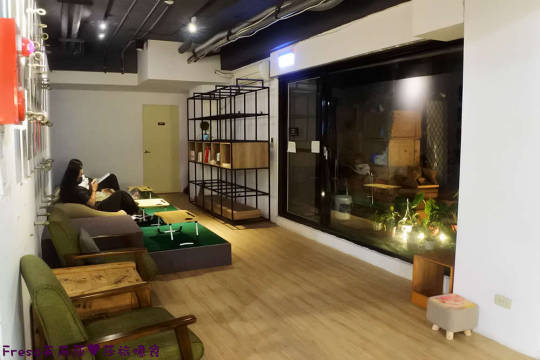
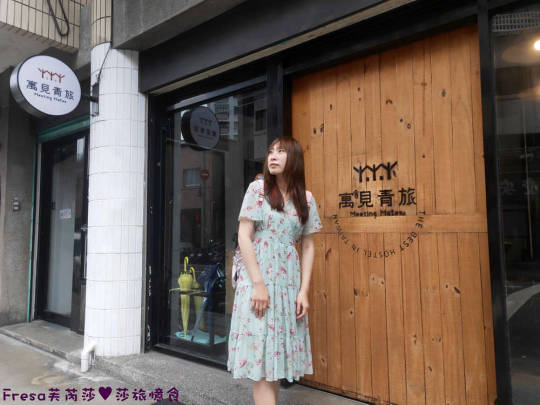
喜歡旅行時,尋找平價省錢的~ 近龍山寺捷運站,設備算是齊全. 不妨可以考慮入住寓見青旅! 好好遊玩剝皮寮老街周邊景點!
【寓見青旅】 時間:10:00~20:00 公休:無 電話:(02)7755-3617 粉絲團:[寓見青旅MeetingMates Hostel](https://www.facebook.com/MeetingMatesHostel/) 地址:台北市萬華區昆明街316號 (03JUN23│本文純屬美食分享文│餐點口感及現場客源可能不同)
0 notes
Photo

大相撲大阪場所 . . 14日目は 翠富士は大栄翔に敗れました。 霧馬山は不戦勝で勝ちました。 若元春は北勝富士豊昇龍に敗れました。 12勝2敗 大栄翔 11勝3敗 霧馬山 . . 十両は13勝1敗 逸ノ城 12勝2敗 朝乃山 . . 📷2023.03 ↓↓↓ share #大相撲大阪場所 #大相撲春場所 #大相撲3月場所 #錦富士 #翠富士 #北青鵬 #金峰山 #大栄翔 #豊昇龍 #若隆景 #若元春 #宇良 #琴ノ若 #朝乃山 #逸ノ城 #霧馬山 #sumo #grandsumo3 #tokyo #japan #sumoday #followme #rikishi #おすもうさん #力士 #大相撲 #相撲 #大相撲好きな人と繋がりたい #両国 #エディオンアリーナ大阪 @grandsumo3 @sumokyokai (大阪エディオンアリ-ナ) https://www.instagram.com/p/CqNZivVPVFG/?igshid=NGJjMDIxMWI=
#大相撲大阪場所#大相撲春場所#大相撲3月場所#錦富士#翠富士#北青鵬#金峰山#大栄翔#豊昇龍#若隆景#若元春#宇良#琴ノ若#朝乃山#逸ノ城#霧馬山#sumo#grandsumo3#tokyo#japan#sumoday#followme#rikishi#おすもうさん#力士#大相撲#相撲#大相撲好きな人と繋がりたい#両国#エディオンアリーナ大阪
0 notes
Photo

台北天氣晴 #shotoniphone #taipei101 #101大樓 #櫻花 #富士桜 #sakura #cherryblossom #花見 #龍騰御櫻 @minimal_taiwan @discover_taiwan @visualambassadors @travellingthroughtheworld #landscape #青空が好き #tokyocameraclub #taipei #eventtaiwan #maokong #貓空 #my_daily_sun #山歩き #hiking #写真好きな人と繋がりたい #写真撮ってる人と繋がりたいたい #夕焼け好きな人と繋がりたい #山が好き(在 龍騰御櫻) https://www.instagram.com/p/CpVXrrqP6Yc/?igshid=NGJjMDIxMWI=
#shotoniphone#taipei101#101大樓#櫻花#富士桜#sakura#cherryblossom#花見#龍騰御櫻#landscape#青空が好き#tokyocameraclub#taipei#eventtaiwan#maokong#貓空#my_daily_sun#山歩き#hiking#写真好きな人と繋がりたい#写真撮ってる人と繋がりたいたい#夕焼け好きな人と繋がりたい#山が好き
1 note
·
View note
Text
April 12, Xi'an, China, Qinglong Temple/青龙寺 (Part 3 - History):
A model of Qinglong Temple in Tang dynasty (618 - 907 AD):

There must have been something like thirty engravings of famous poems about the temple lining the walls of the corridors. Below are three examples of these engravings, from these poems one can get a feel for how Qinglong Temple used to look like. A note on the translations: they are rather unpolished as I just wanted to get the meaning across.

《題青龍寺詩》 [唐] 朱慶餘 寺好因崗勢,登臨值夕陽。 青山當佛閣,紅葉滿僧廊。 竹色連平地,蟲聲在上方。 最憐東面靜,為近楚城墻。
Translation (by me):
"In Commemoration of Qinglong Temple" By Zhu Qingyu (Tang dynasty) The beauty of this temple comes from the mountains, By the time I summited it was already dusk. Verdant peaks behind temple buildings, Scarlet leaves filling the corridors. Bamboo groves connecting flat areas, Chirping of insects above it all. Only the east side remains still, Since it's close to the city walls.

《清明日青龍寺上方賦得多字》 [唐] 皇甫冉 上方偏可適,季月況堪過。 遠近水聲至,東西山色多。 夕陽留徑草,新葉變庭柯。 已度清明節,春秋如客何。
Translation (by me):
"Qingming Festival Above Qinglong Temple" By Huangfu Ran (Tang dynasty) It's comfortable up in the mountains, Watching the season pass by. Sounds of flowing water from near and far, Views of mountains from east and west. Setting sun upon the grassy path, Growing leaves cover the courtyard trees. Qingming Festival has come and gone, Just like the seasons and the temple visitors.

《青龍寺早夏》 [唐] 白居易 塵埃經小雨,地高倚長坡。 日西寺門外,景氣含清和。 閑有老僧立,靜無凡客過。 殘莺意思盡,新葉陰涼多。 春去來幾日,夏雲忽嵯峨。 朝朝感時節,年鬓闇蹉跎。 胡爲戀朝市,不去歸煙蘿。 青山寸步地,自問心如何。
Translation (by me):
"Early Summer at Qinglong Temple" By Bai Juyi (Tang dynasty) Light shower settled the dust, Temple grounds blending with the hills. Setting sun outside temple gates, The scene filled with an air of serenity. An old monk stands in idleness, There are no worldly passersby in the stillness. Remaining birds having sung their melodies, New leaves providing ample amounts of shade. End of spring was just days ago, Summer clouds are already towering above. Every day we feel the passing of seasons, Our hair graying in the meantime. Why obsess over bustling cities, When we can return to the lush countryside? These verdant mountains are but a corner of the world, Here I stand and reflect upon the state of my heart.
Huiguo and Kukai
In the first part I mentioned that Qinglong Temple was where Kukai/空海 studied Vajrayana Buddhism (the Chinese Esoteric tradition was also called "Tangmi"/唐密, since it was very popular in Tang dynasty) under Huiguo/惠果. Huiguo was a student of the famous Vajrayana Buddhist master and translator Amoghavajra (Chinese name Bukong/不空). Huiguo eventually became a master himself in the Chinese Esoteric tradition, and was an Acharya (Sanskrit term meaning teacher; translated phonetically as asheli/阿阇黎 in Chinese) who had many students from different places, including from surrounding countries. Kukai was one of his last notable students before he passed away. Kukai returned to Japan in 806 AD and founded the Shingon school of Buddhism/真言宗 (also sometimes called Eastern Esotericism/東密).
Kukai was also a calligrapher and a poet, below are two examples of his works (first is an ink rubbing of his calligraphy work titled "Buddha", second is his calligraphy work named Huushincho/風信帖; both were written in Chinese):


Closeup of Huushincho (from Wikipedia). The original is at Touji Temple in Kyoto, Japan.

Shōryō shu/Xinglingji/性靈集, a collection of kanshi by Kukai. Kanshi/漢詩 is a Japanese word for Chinese poetry. These books here are a gift from Japan.

Bunkyō hifu ron/Wenjingmifulun/文鏡秘府論 by Kukai which discusses Chinese poetry. These books are a gift from Japan.

There are also other gifts from Japan. Left is the top of a khakkhara staff (In Chinese and Japanese: xizhang/锡杖/錫杖, shakujō/錫杖). Right is a Vajra (in Chinese and Japanese: jingangchu/金刚杵/金剛杵, kongosho/金剛杵), this is a Vajrayana ritual object. This particular Vajra is commemorative and bears the names of Huiguo and Kukai:


And that's all for Qinglong Temple. Next up is another famous temple in Xi'an, Daci'en Temple/大慈恩寺.
#2024 china#xi'an#china#qinglong temple#buddhist temple#history#chinese history#vajrayana buddhism#kukai#huiguo#buddhism#poetry#chinese poetry#my translations
95 notes
·
View notes
Text

Legends of the humanoids
Reptilian humanoids (4)
Five Dragon Kings – the Five Coloured Dragons with Directions in ancient Chinese belief
Historically there arose a cult of the Five Dragon Kings in Chinese legend based on Wuxing (5 elements, Nature Philosophy on Taoist cosmology). The name Wufang longwang ( "Dragon Kings of the Five Regions/Directions") is registered in Taoist scripture from the Tang dynasty, found in the Dunhuang caves, also be known as the Magao caves.
Incorporating elements of traditional Chinese beliefs, the Five Elements, it associates the Five Dragon Kings and the five coloured dragons with the five directions. In the east, there is the Blue Dragon God King, who has 49 Dragon Kings under his command, who control 70 myriad myllion small dragons, mountain spirits and sundry charms. The document states that it is the work of the small dragons and spirits under the control of the Dragon King that cause poison and disease to people, and that they should pray to the Dragon King who oversees them for healing. The Red Dragon God King is located in the south, the White Dragon God, the White Dragon God King in the west, the Black Dragon God King in the north and the Yellow Dragon God King in the centre, each with a considerable number of Dragon Kings, countless small dragons and charmed demons.
The Azure Dragon or Blue-Green Dragon (Qīnglóng), or Green Dragon (Cānglóng), is the Dragon God of the east, and of the essence of spring. The Red Dragon (Chìlóng or Zhūlóng, literally "Cinnabar Dragon", "Vermilion Dragon") is the Dragon God of the south and of the essence of summer. The White Dragon (Báilóng) is the Dragon God of the west and the essence of autumn. The Yellow Dragon (Huánglóng) is the Dragon God of the center, associated with late summer. The Black Dragon (Hēilóng), also called "Dark Dragon" or "Mysterious Dragon" (Xuánlóng), is the Dragon God of the north and the essence of winter.
[Image bottom: One of the Buddha statues in Mogao Caves, China]

伝説のヒューマノイドたち
ヒト型爬虫類 (4)
五方龍王 〜 古代中国の信仰における五方位に結びつく五色の龍王
歴史上、中国の伝説には五行(5つの要素) に基づいた「五方龍王信仰」があった。敦煌石 (莫高窟) で発見された唐代の道教経典には、「五方龍王」という名前が記されている。
中国の伝統的な信仰の要素である五行 (道教の宇宙論に基づく自然哲学) を取り入れ、五龍王と五色の龍を五つの方角と関連付けている。東方には青龍神王がおり、配下に49の龍王をしたがえ、それらが70万億の小龍や山精・雜魅を従えている。この文書の趣旨は、四方八方どこにでも、人間を毒や病に侵す龍王の手先がいて、彼らの主である龍王に救済を祈り求めなければならないということだ。南方には赤龍神王、西方には白龍神王、北方には黒龍神王、中央には黄龍神王がおり、同様にそれぞれ相当数の龍王、無数の小龍、魅鬼などが配置される。
蒼龍または蒼緑龍(靑龍)、または緑龍(蒼龍)は、東の龍神であり、春の本質を表す。赤龍(辰砂龍 または 朱龍)は南の龍神で、夏の神である。白龍は西の龍神であり、秋の神である。黄龍(黃龍)は中央の龍神で、晩夏に関連している。黒龍(黑龍)は「暗龍」または「神秘龍(玄龍)」とも呼ばれ、北の龍神であり、冬の精髄である。
#humanoids#legendary creatures#hybrids#hybrid beasts#cryptids#therianthropy#legend#mythology#folklore#s.f.#nature#art#taoism#yin yang#chinese mythology#taoist cosmology#wuxing#5 dragon kings
137 notes
·
View notes
Text



Sean bienvenidos japonistasarqueologicos a una nueva entrega arqueológica recién salida del horno, se ha descubierto en la prefectura de Nara espejo de bronce en forma de escudo hallado en el túmulo funerario de Tomio Maruyama, dicho esto pónganse cómodos desde que comenzamos. - Características : Mide 64 cm de largo y 31 cm de ancho. Data de finales del siglo IV y tiene 109 m de diámetro. En un examen que se realizó mediante rayos X fluorescentes al espejo con forma de escudo y estaba compuesto de cobre detectó la presencia de estaño, cobre y plomo. La superficie del espejo tenía rastros de que había sido pulido de forma suave. Los patrones geométricos, como es el patrón 'dragón', es una representación simplificada de una bestia divina china posiblemente tuvieran influencia china y los patrones de, los dientes de sierra, que se asemejan a hojas de sierra, se le aplican en la parte posterior. - En el mismo yacimiento se han encontrado: -85 espadas serpentinas en Japón y 4 en Corea del Sur. -La espada serpentina tiene una longitud total de 237, es tres veces más grande que el túmulo funerario de Uda Kitahara que es de 84,6 centímetros localizados en la ciudad de Uda, prefectura de Nara.
Kosaku Okabayashi, subdirector del Instituto Arqueológico de Kashihara, dijo en una conferencia de prensa: "El espejo de cobre en forma de escudo muestra el pensamiento flexible y la creatividad de la gente de la época, así como el alto poder de diseño. Prueba que el nivel técnico de producción fue más alto de lo que había imaginado". - El Túmulo funerario de Tomio Maruyama fue construido en la segunda mitad del siglo IV, dicho túmulo funerario tiene forma circular y es el más grande de Japón. La medición tridimensional con un láser reveló una estructura de tres etapas con un diámetro de 109 metros. La parte principal de la parte superior del montículo fue robada durante el período Meiji, y la piedra kuwagata, que se cree que fue desenterrada en ese momento, ha sido designada como una importante propiedad cultural nacional. - Espero que os guste y pasen una buena semana y nos vemos en próximas publicaciones de Japón.
-
日本の考古学者の皆さん、焼きたての新しい考古学的情報へようこそ。丸山富雄の古墳で見つかった盾の形をした青銅鏡が奈良県で発見されました。 - 特徴: サイズは長さ64cm、幅31cmです。 4 世紀末に造られた直径 109 m です。 銅製の盾型ミラーを蛍光X線で検査したところ、錫、銅、鉛の存在が検出されました。 鏡の表面には軽く磨いた跡があった。 「龍」文様などの幾何学模様は中国の影響を受けたと思われる中国の神獣を簡略化して表現したもので、背中にはノコギリの刃のような鋸歯文様が施されています。 - 同じサイトで次のものが見つかりました。 -蛇紋刀は日本に85本、韓国に4本。 蛇剣の全長は237で、奈良県宇陀市にある宇陀北原古墳の84.6センチメートルの3倍以上の大きさです。 橿原考古学研究所の岡林耕作副所長は記者会見で「盾形の銅鏡は、当時の人々の柔軟な思考と創造性、高いデザイン力を示している」と述べた。制作の技術レベルは想像以上でした。」 - 富雄丸山古墳は4世紀後半に築造された日本最大の円墳です。レーザーによる三次元計測により、直径109メートルの3段構造が判明した。明治時代に墳丘上部の主要部が盗まれ、その際に出土したとされる鍬形石は国の重要文化財に指定されている。 - 気に入っていただけて、良い一週間をお過ごしいただければ幸いです。今後の日本からの投稿でお会いしましょう。
-
Welcome, japanesearchaeologists, to a new archaeological delivery fresh from the oven, a bronze mirror in the shape of a shield found in the burial mound of Tomio Maruyama has been discovered in the Nara prefecture. That said, make yourself comfortable as we begin.
-
Characteristics : It measures 64 cm long and 31 cm wide. It dates from the end of the 4th century and is 109 m in diameter. In an examination that was carried out using fluorescent X-rays on the shield-shaped mirror and was composed of copper, the presence of tin, copper and lead was detected. The surface of the mirror had traces of being lightly polished. The geometric patterns, such as the 'dragon' pattern, is a simplified representation of a Chinese divine beast possibly having Chinese influence and the sawtooth patterns, which resemble saw blades, are applied to the back. . - In the same site they have been found:
-
85 serpentine swords in Japan and 4 in South Korea. -The serpentine sword has a total length of 237, it is three times larger than the burial mound of Uda Kitahara which is 84.6 centimeters located in the city of Uda, Nara prefecture. Kosaku Okabayashi, deputy director of the Kashihara Archaeological Institute, said at a press conference: "The shield-shaped copper mirror shows the flexible thinking and creativity of the people of the time, as well as the high design power. It proves that "The technical level of production was higher than I had imagined."
-
The Tomio Maruyama Burial Mound was built in the second half of the 4th century. This burial mound is circular in shape and is the largest in Japan. Three-dimensional measurement with a laser revealed a three-stage structure with a diameter of 109 meters. The main part of the upper part of the mound was stolen during the Meiji period, and the kuwagata stone, believed to have been unearthed at that time, has been designated as an important national cultural property.
-
I hope you like it and have a good week and see you in future posts from Japan.
#日本#歴史#古墳#考古学#日本研究考古学#考古学的発掘#遺跡#奈良#奈良県#日本地理#ユネスコ#丸山古墳#古墳時#japan#history#kofun#archaeology#japanesearchaeology#archaeologicalexcavation#archaeologicalsite#Nara#naraprefecture#Japanesegeography#unesco#Maruyamaburialmound#Kofunperiod#Japaneseprehistory#tsukuridashi#Kashihara
49 notes
·
View notes
Photo

(映画『渇いた鉢』12月10日(土)より池袋シネマ・ロサほか全国順次公開決定! - Tokyo Nowから)
0 notes
Text

Another year, another season, another post going into Chinese mythology (mostly in how it pertains to Journey to the West).

LI JING (李靖) is someone I've actually already discussed a bit here in terms of his and Nezha's backstories, but for JttW specifically, he's sent by the Jade Emperor to subdue Sun Wukong, and of course things don't go well in his favor. Later, he attempts to help Sun Wukong in apprehending the One-Horned Rhinoceros King and later shows up to arrest the Bull Demon King, and again after Tang Sanzang is kidnapped by the GOLDEN-NOSED WHITE-HAIRED RODENT-SPIRIT (金鼻白毛老鼠精), otherwise known as LADY EARTH FLOW (地涌夫人).

The SIXIANG (四象), or Four Signs, include ZHUQUE (朱雀), XUANWU (玄武), BAIHU (白虎), and QINGLONG (青龍) are the guardians of the four cardinal directions (South for the Vermillion Bird/Zhuque, North for the Black Tortoise/Xuanwu, West for the White Tiger/Baihu, and East for the Azure Dragon/Qinglong). In JttW, they are referenced towards the end in a poem:
One Real Body dropped to the dusty plain
Fuses with Four Signs to tend the self again.
In Five Phases terms forms are dead and void;
The fiends' vain names one should all avoid.
Great Bodhi's the right Candana fruition;
Appointments crown this rise from perdition.
Gracious light of scriptures now worldwide dilates,
As five sages live within Advaya's gates.

Much like the dragon family he'd married into, the NINE-HEADED BEAST (九頭蟲) is a thief, having collaborated with his father-in-law, the Wansheng Dragon King (萬聖龍王), into stealing a Buddhist relic—known as a Śarīra—from Jisai's Golden Ray Monastery. Erlang Shen's dog bites one of his heads off, but he manages to escape otherwise.

Like in many other religions, NÜWA (女媧) is said to have molded humans from clay, having initially creating what would become the nobility by hand before resorting to mass production for the rest. One day, when the heavens began to crumble—its cause depending on the source—she gathered five colored stones to patch up the sky, while a tortoise's legs would be used as pillars for support.

The Underworld in Chinese mythology is said to be divided into several hells and overseen by YANWANG (閻王) alongside nine other kings: QINGUANGWANG (秦广王), CHUJIANGWANG (楚江王), SONGDIWANG (宋帝王), WUGUANWANG (五官王), BIANCHENGWANG (卞城王), TAISHANWANG (泰山王), PINGDENGWANG (平等王), DUSHIWANG (都市王), and ZHUANLUNWANG (转轮王). Most infamously, Sun Wukong erased his name and that of every monkey he knew from the Ledger of Life and Death and to prevent them from dying.
31 notes
·
View notes